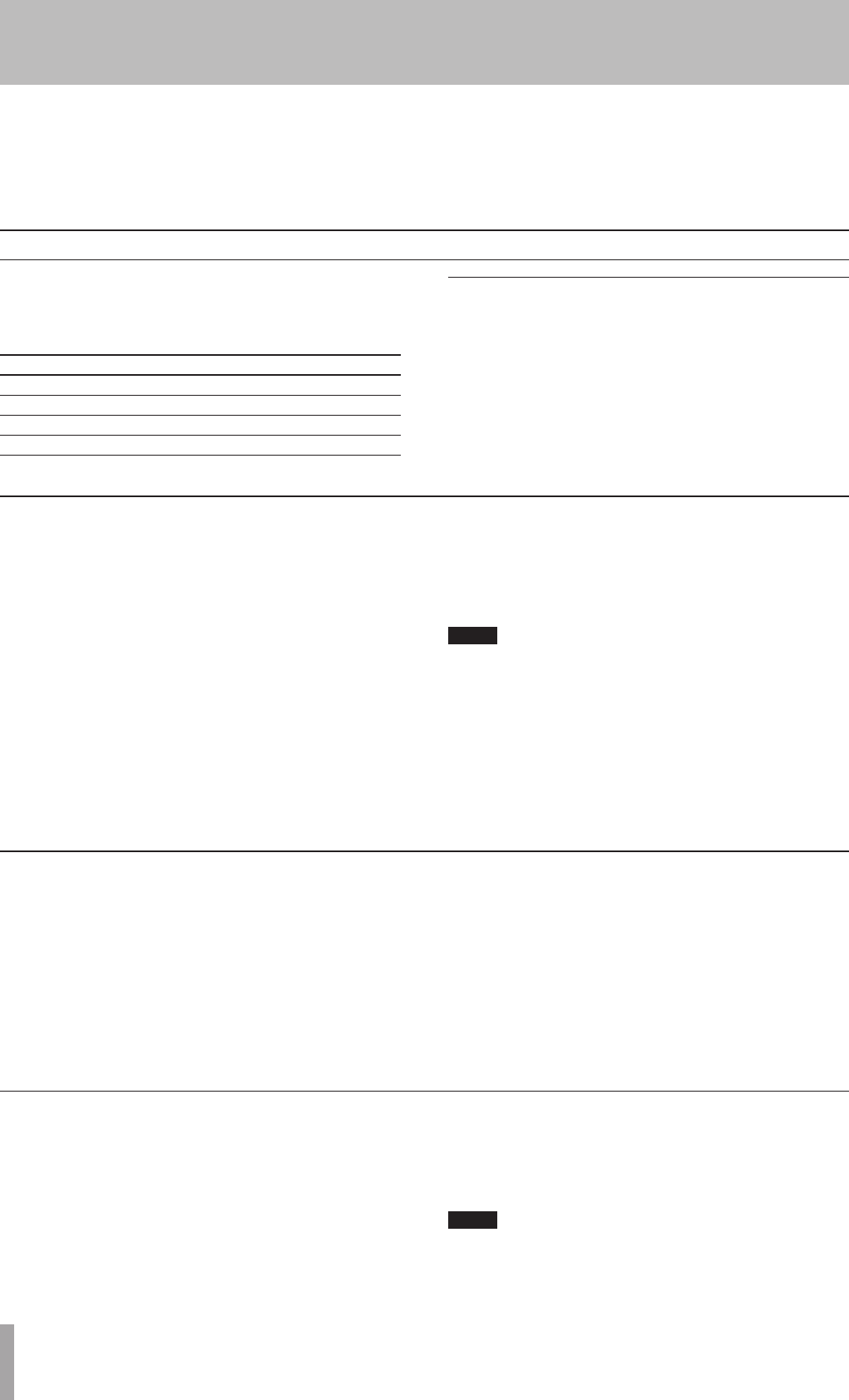
1- Introduction
20 TASCAM CC-222SL
Input monitoring
When the unit is in record standby mode, or record mode,
the input signal is output from the OUTPUT jacks (digital
and analog), allowing you to hear the input signal.
The meters also show the current signal level.
However, it is only possible to record, or to enter record
standby mode, when a recordable disc is inserted. To allow
monitoring of the input signal at other times, or when the
unit is stopped, use the RECORD key on the main unit
or remote control to enter monitor mode from stop mode
when there is no recordable disc in the unit (when there is
a recordable disc in the unit, pressing the RECORD key
enters record standby mode).
The word MONITOR appears on the display to show that
the output signal is an echo of the input signal(s). The
meters show the current input level.
Exit the monitor mode by using the STOP key.
Before you start recording using the CC-222SL, make sure
that you understand the following key points:
Once you have recorded on a CD-R disc, the data
cannot be erased from it.
•
You can add tracks to an unfinalized recordable disc.
Once finalized, a CD-R disc is “fixed” and behaves in
the same way as a pre-recorded disc. Finalized CD-RW
discs, however, can be erased, refreshed and re-recorded.
•
Input selection
To select the input to be recorded, press the INPUT 1 SEL
key on the main unit.
Repeated presses of the key cycles through the following options:
OPTICAL Optical digital in
COAXIAL Coaxial digital in
LINE1 Analog in (LINE 1)
PHONO Phono inputs
TAPE CC-222SL cassette deck
In the case of either the coaxial or optical inputs being
selected, the appropriate indicator: cOAXiAl or OPTicAl, lights
on the right of the display.
If an analog signal is selected, the liNe 1 or TAPe indicator
lights on the right of the display.
Signal volume
The analog signals received at the LINE 1 jacks,
the RIAA PHONO jacks and from the tape (if the
input volume is not being bypassed—see below) are
controlled with the CD deck’s INPUT control. When this
control is at the 12 o’clock position, the signal is neither
cut nor boosted.
The level of the digital inputs may be controlled using
the digital volume menu, as described below.
1 PresstheRECORDkeytoplacetheunitinrecord
standbymode.
2 RepeatedlypresstheMENUkeyuntilthedisplay
showsVOLUME>XXXdBwhereXXXisthecur-
rentsetting.
•
•
3 UsetheMULTI DIALorSKIPkeystoadjusttheinput
level.Themaximumboostis+18db,andthesignal
maybecutbyupto60dB.Thereisalsoa---dB
settingwhichrepresentsacompletesignalcut.
NOTE
The digital volume menu can be used for analog
inputs, however, using the CD deck’s INPUT control to
adjust analog inputs with the digital volume set to zero
is recommended.
The level set for digital inputs is not applied to analog
inputs and vice versa. If analog inputs are selected
after setting digital input level, the set value is ignored
and the value previously set for analog inputs returns.
Sampling Frequency conversion
The sampling frequency for CDs is 44.1 kHz. The CC-222SL
will always record (and play back) CDs at this frequency.
However, if recording through a digital connection (either
coaxial or optical) and the source has been recorded at a
frequency other than 44.1 kHz, or is being played back at a
non-standard speed using a varispeed unit, the CC-222SL’
s internal frequency converter: SRC (Sampling Rate
Convertor), converts the incoming frequency to 44.1 kHz.
1 PresstheMENUkeyrepeatedlyuntiltheSRC>XXX
appears.
2 TurntheMULTI DIALtosetthevalueONorOFF.
NOTE
When the SRC setting is off, the frequency convertor is
bypassed. In this case, digital signals other than 44.1kHz
cannot be recorded. If an attempt is made, the error
message NotFs44.1k! will appear on the display.
5 – Recording CDs


















